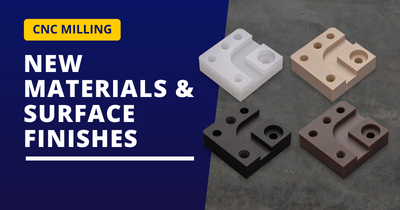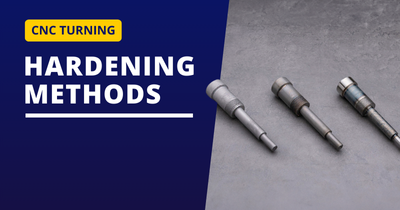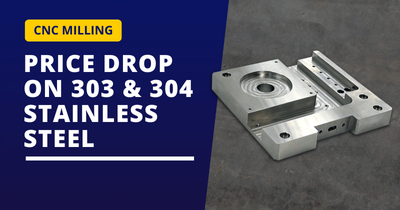Everything You Need to Know About the Hardness of Materials
Hardness is a crucial material property in engineering, manufacturing, and material science. It determines a material’s ability to resist deformation, wear, and scratches. Whether you’re designing tools, selecting metals, or working with plastics, understanding hardness is essential.
In this guide, we’ll cover:
- What hardness is
- Different types of hardness
- Common hardness testing methods
- Factors affecting hardness
- Hardness of popular materials
What is Hardness?
Definition:
Hardness is the resistance of a material to localized deformation caused by indentation, scratching, cutting, or abrasion. It is a measure of how well a material withstands external mechanical forces without permanent damage.
Why is Hardness Important?
- Determines wear resistance (e.g., cutting tools and gears).
- Affects material machinability (harder materials are harder to cut).
- Plays a role in durability and lifespan.
Types of Hardness
- Indentation Hardness
- Measures a material’s resistance to permanent deformation under a concentrated load.
- Used for metals, plastics, and ceramics.
- Examples: Brinell, Rockwell, and Vickers hardness tests.
- Scratch Hardness
- Measures a material’s ability to resist surface scratches.
- Common in mineralogy and coatings.
- Example: Mohs hardness scale.
- Rebound (Dynamic) Hardness
- Measures how high a material bounces back after impact.
- Used for metals and elastomers.
- Example: Leeb hardness test.
Hardness Testing Methods
- Brinell Hardness Test (HBW)
- Used for metals with rough surfaces.
- A steel or tungsten carbide ball is pressed into the material.
- Best for softer metals like aluminum and cast iron.
- Rockwell Hardness Test (HRB, HRC)
- Measures indentation depth under load.
- Different scales (HRC for steel, HRB for brass).
- Fast and widely used in industrial applications.
- Vickers Hardness Test (HV)
- Uses a diamond pyramid-shaped indenter.
- Suitable for thin materials and coatings.
- High accuracy, used for small parts and microstructures.
- Mohs Hardness Test
- Compares scratch resistance against ten reference materials (1 = Talc, 10 = Diamond).
- Used for minerals and ceramics.
- Leeb Rebound Hardness Test (HL)
- Measures energy loss from an impact.
- Portable and non-destructive.
- Used for large metal components.
Factors Affecting Hardness
- Material Composition
- Metals with stronger atomic bonds are harder (e.g., tungsten vs. lead).
- Alloying elements (e.g., carbon in steel) increase hardness.
- Heat Treatment
- Quenching and tempering improve hardness in steels.
- Annealing reduces hardness to improve machinability.
- Manufacturing Process
- Cold working (rolling, forging) increases hardness.
- Hot working reduces hardness by refining grain structure.
- Surface Treatments
- Case hardening creates a hard outer layer (e.g., carburizing).
- Coatings like nitriding or PVD enhance surface hardness.
Hardness of Common Materials
| Material | Brinell Hardness (HBW) | Rockwell Hardness (HRC/HRB) | Mohs Hardness |
| Diamond | – | – | 10 |
| Hardened Steel | 600+ | 60+ HRC | 7.5-8 |
| Stainless Steel | 150-300 | 40-50 HRC | 5-6 |
| Aluminum | 15-150 | 15-50 HRB | 2.5-3 |
| Copper | 35-90 | 20-30 HRB | 3 |
| Glass | – | – | 5-7 |
| Plastic (Nylon) | 10-30 | – | 2-3 |
Choosing the Right Hardness for Your Application
High Hardness (HRC 50+ / Mohs 7+)
- Cutting tools (drills, saw blades)
- Bearings and wear-resistant parts
- Hardened steel components
Medium Hardness (HRC 30-50 / Mohs 4-6)
- Structural metals (steel beams, machine parts)
- Automotive components
- Aerospace materials
Low Hardness (HRC < 30 / Mohs < 4)
- Plastics, rubbers, and soft metals
- Electrical conductors (copper, aluminum)
- Decorative and non-load-bearing parts
Conclusion
Hardness is a key factor in material selection, affecting wear resistance, machinability, and durability. Different hardness testing methods provide valuable insights into a material’s performance under stress. Whether you’re working with metals, ceramics, plastics, or coatings, understanding hardness ensures better design decisions and longer-lasting products.
Available Hardening options for meviy Materials
Many meviy materials can have additional hardening specified to achieve your requirements.
Need Help Choosing the Right Material?
Drop a comment below or contact us for expert recommendations!






